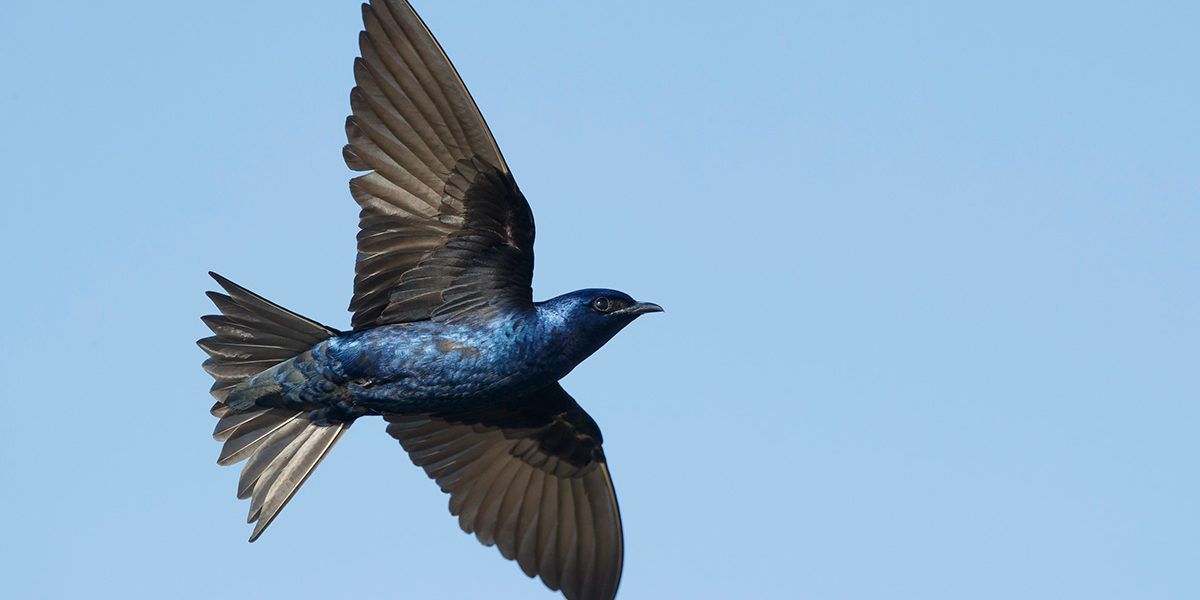Bird of The Week: Purple Martin
SCIENTIFIC NAME: Progne subis
POPULATION: 7 million
TREND: Decreasing
HABITAT: Breeds in Canada, the U.S., and Mexico; winters in South America
The Purple Martin, North America’s largest swallow, is a swift and skilled flyer: The birds eat, drink, and even bathe on the wing. The species is part of a group of birds known as aerial insectivores—birds that feed on airborne insects—which includes swifts, swallows, the Chuck-will’s-widow, and the Olive-sided Flycatcher, to name a few. These birds have all shown steep population declines in the past few decades.
Widespread pesticide use and collisions with man-made structures are among the factors contributing to this species’ decline. In addition, aggressive introduced species such as House Sparrows and European Starlings out-compete martins for nest sites.
Threats to Purple Martin
Pesticides, particularly the newer neonicotinoid insecticides, are a serious threat to the Purple Martin and other aerial insectivores, both on their breeding grounds and their wintering grounds in South America. A Watch List species, Purple Martins are considered a species of special concern in many U.S. states and in Canada.
Purple Martins are cavity-nesters, normally reusing old woodpecker holes, but populations in the eastern part of the U.S. depend almost exclusively on manmade housing. The practice of removing dead trees in many forests has eliminated natural cavities used by the martin. That, along with the competition from the introduced starlings and sparrows, has further reduced the availability of naturally occurring cavities.
Purple Martins are vulnerable to unseasonably cold or wet weather. A sudden cold snap lasting more than three or four days can decimate flying insect numbers, starving the birds to death.
Purple Martins and People
Unlike many native birds, the Purple Martin thrives in close proximity to humans. This relationship dates back to the Native Americans, who hung empty gourds for Purple Martin nests. Most people welcome Purple Martin neighbors, as these birds are agile hunters and eat large quantities of winged insects. (However, contrary to popular belief, mosquitoes do not form a large part of their diet.)
Purple Martins exhibit a very high level of site fidelity. Once they have bred successfully at a specific location, the same individuals return year after year.
Long-distance Migrants
Purple Martins are long-distance migrants, wintering in the Amazon Basin along waterways and wetlands. They can also be found at ABC-supported Barba Azul Reserve in Bolivia during the winter, along with other North American migrants such as Bobolink and Buff-breasted Sandpiper.
Purple Martins head north again with the warming spring temperatures that signal the emergence of flying insects, setting up nesting territories in open spaces close to wetlands, swamps, or wet meadows, where large numbers of insects breed. These are highly social birds, usually nesting in good-sized colonies. After the breeding season is completed, they form large, noisy flocks, roosting and even migrating together.
Source: American Bird Conservancy (abcbirds.org)


